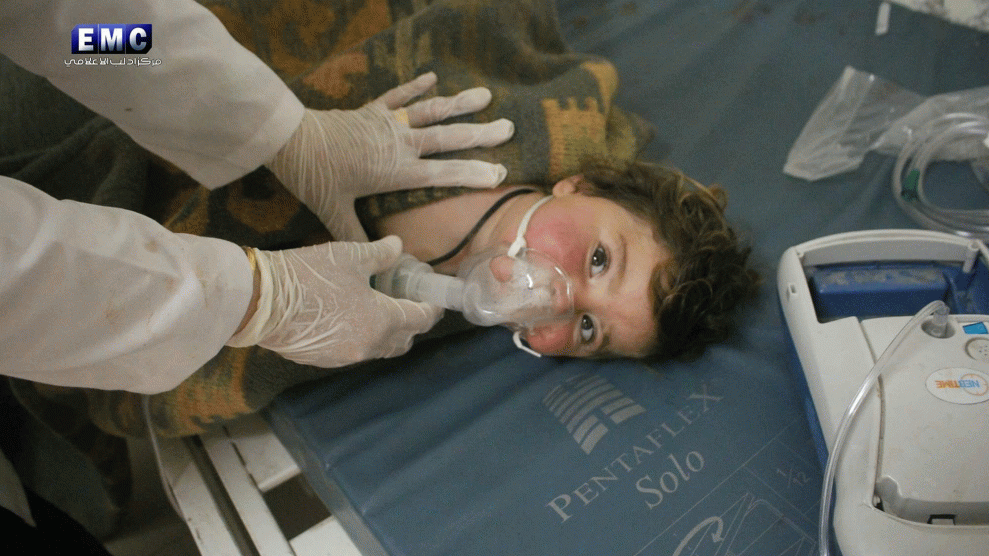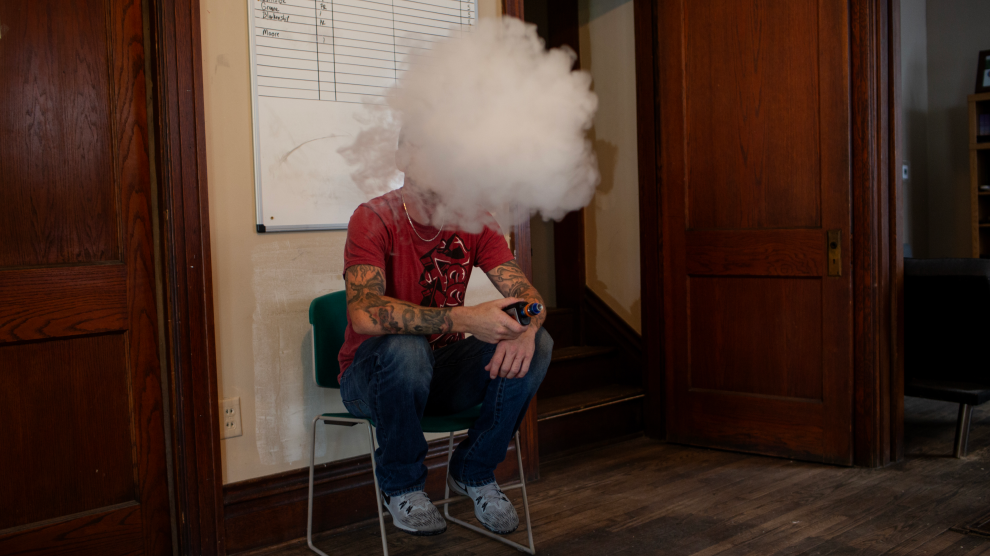
A child receives medical treatment after a chemical attack in Khan Sheikoun, Syria.ZUMA Wire
On July 23, 2012, a former spokesman for the Syrian foreign ministry acknowledged for the first time that his government had stockpiles of chemical weapons, but asserted that they would “never, never be used against the Syrian people or civilians during this crisis, under any circumstances.” A little more than a year later, approximately 1,400 people on the outskirts of Damascus were killed in a chemical attack carried out by the regime of President Bashar al-Assad. It was the largest chemical weapons attack since Saddam Hussein gassed thousands of Kurds in Halabja, Iraq, 25 years earlier. Now, as the Syrian civil war enters its sixth year, chemical weapon attacks on civilians continue apace.
Yesterday, disturbing photos and videos (warning: they’re graphic) started coming out of the town of Khan Sheikoun in rebel-held Idlib Province: children in spasms, foaming at their mouths, gasping for breath, and lying motionless as parents cry over them and rescue teams attempt to wash chemical agents from their bodies. According to the Syrian American Medical Society and various monitoring groups, barrel bombs were dropped on civilian areas, reportedly killing at least 74 people, including at least 11 children, and injuring hundreds more. The bombs contained toxic chemical agents, likely including sarin—a liquid nerve agent that often causes death by asphyxia.
After the attack, the White House pinned the blame on the Obama administration’s “weakness and irresolution.” This morning, President Donald Trump, who previously excused Assad’s crimes by highlighting that his regime was also fighting ISIS, said that the attack “crosses many lines, beyond a red line, many many lines,” possibly signaling a change in attitude toward Syria and Assad. (Just days before the attack, Nikki Haley, the American ambassador to the United Nations, stated that the administration does not consider removing Assad from power a priority, echoing Secretary of State Rex Tillerson, who said last week that Assad’s future “will be decided by the Syrian people.”)
Yesterday’s attack was the latest in a long string of chemical attacks against Syrian civilians. Here’s a brief timeline of how we got here.
- August 20, 2012
-
President Barack Obama says that the use of chemical weapons in Syria would be a “red line” and would “change my calculus” for a military response in Syria.
- December 23, 2012
-
The first allegations of chemical weapon use in Syria are reported. Seven people in Homs are allegedly killed by “poisonous gas” used by the Assad regime. Later, a leaked State Department cable stated that there was credible evidence that the government used a chemical weapon known as Agent 15 in the attack.
- March 12, 2013
-
After France and the United Kingdom send letters urging an investigation into three alleged uses of chemical weapons in Syria, United Nations Secretary General Ban Ki-moon announces that the UN would investigate. Within a month, opposition activists and observers allege that the Assad regime has carried out two more chemical weapons attacks. Ban states that Syria has impeded in the investigations.
- August 21, 2013
-
More than 1,000 people are killed in a large chemical weapon attack on the outskirts of Damascus. A UN investigation concludes that ground-to-ground rockets delivered the nerve agent sarin, and the evidence suggests the government was behind the assault. The United States later issues a report blaming the Syrian government.
- August 31, 2013
-
President Obama says he will seek congressional authorization for the use of force against Syria: “I’m confident we can hold the Assad regime accountable for their use of chemical weapons, deter this kind of behavior, and degrade their capacity to carry it out.” Congress never votes on it, and the measure is shelved after then-Secretary of State John Kerry remarks that Assad can avoid military strikes if he turns over his chemical weapons stockpile.
- September 27, 2013
-
The United Nations Security Council orders the Syrian government to destroy all of its chemical weapons stockpiles by 2014, threatening to authorize the use of force if it doesn’t comply.
- June 23, 2014
-
The Organization for the Prohibition of Chemical Weapons (OPCW) announces that all remaining chemical weapons have been shipped out of Syria for disposal. Yet it is widely suspected that not all of Syria’s chemical weapons were removed.
- September 10, 2014
-
A OPCW fact-finding mission concludes that chlorine gas is being used as a weapon in Syria. Chlorine, a choking agent which fills the lungs with liquid, was not among the chemicals that had to be destroyed under the UN agreement. But it is banned by the Chemical Weapons Convention.
- August 7, 2015
-
The UN Security Council authorizes OPCW and UN investigators to determine who was behind chlorine gas attacks on civilians in rebel-held areas.
- August 10, 2016
-
For the third time in two weeks, chlorine gas is reportedly used against civilians in northern Syria, killing at least 4 people and wounding 60 more. Experts warn that the abundance of chemical weapons attacks may normalize war crimes.
- August 24, 2016
-
The OPCW-UN joint investigation report concludes that the Syrian government was responsible for deploying chlorine gas on two separate occasions on civilian areas in rebel-held northern Idlib Province.
- April 4, 2017
-
More than 70 people, including many children, are killed in a suspected sarin attack in Idlib. The Syrian government is believed to be behind the attack. A day after the attack, Khan Sheikoun’s main medical clinic was directly hit by an airstrike.

















